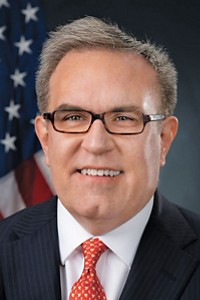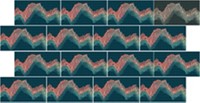Advertisement
Grab your lab coat. Let's get started
Welcome!
Welcome!
Create an account below to get 6 C&EN articles per month, receive newsletters and more - all free.
It seems this is your first time logging in online. Please enter the following information to continue.
As an ACS member you automatically get access to this site. All we need is few more details to create your reading experience.
Not you? Sign in with a different account.
Not you? Sign in with a different account.
ERROR 1
ERROR 1
ERROR 2
ERROR 2
ERROR 2
ERROR 2
ERROR 2
Password and Confirm password must match.
If you have an ACS member number, please enter it here so we can link this account to your membership. (optional)
ERROR 2
ACS values your privacy. By submitting your information, you are gaining access to C&EN and subscribing to our weekly newsletter. We use the information you provide to make your reading experience better, and we will never sell your data to third party members.
Policy
EPA Data-Crunching Tools Need Regular Checkups
National Research Council calls for evaluation of agency models used for regulating
by Cheryl Hogue
June 19, 2007
EPA needs to evaluate, on a regular basis, the computational models it uses in making regulatory decisions, the National Research Council says in a report released on June 14.
The agency???s mathematical and computer models run the gamut from predicting how a pollutant will move through groundwater to estimating the costs and benefits of a proposed regulation. Results of modeling, for example, help regulators decide whether to allow a new pesticide to go to market or set a cleanup level for a particular pollutant at a Superfund site. Over the years, EPA has increased its use of models.
The NRC report says regular, rigorous evaluation of models may be costly. But, it says, "such investments are essential if environmental regulatory modeling is to meet challenges now and in the future."
These reviews may invite challenges to models??? results, either in court or under the Information Quality Act, "because the agency is documenting features of its models that need to be improved," the report says. "However, an improved model is less likely to generate erroneous results that could lead to additional challenges, and it better serves the public interest."
In addition, if EPA has a formal evaluation process for its models, lobbying groups and federal courts may give deference to regulatory decisions that, in part, hinge on results from modeling, the report says.
The report also recommends that EPA, as much as possible, use models that are not proprietary. EPA stirred up controversy in 2005 when it used a proprietary computer model to evaluate various legislative options to cut emissions of sulfur dioxide, nitrogen oxide, and mercury from coal-fired power plants. The Congressional Research Service found the agency???s analysis to be faulty. EPA???s analysis favored the Bush Administration???s less stringent proposal over other legislation, CRS said (C&EN, Dec. 12, 2005, page 8).
EPA "should only adopt proprietary models when a clear and well-documented case has been made that the advantages of using such models outweigh the costs in lower credibility and transparency that accompanies reliance on proprietary models," the report says. "Furthermore, proprietary models should be subject to rigorous quality requirements and to peer review."
The NRC report, "Models in Environmental Regulatory Decision Making," is available online at books.nap.edu/catalog.php?record_id=11972.




Join the conversation
Contact the reporter
Submit a Letter to the Editor for publication
Engage with us on Twitter